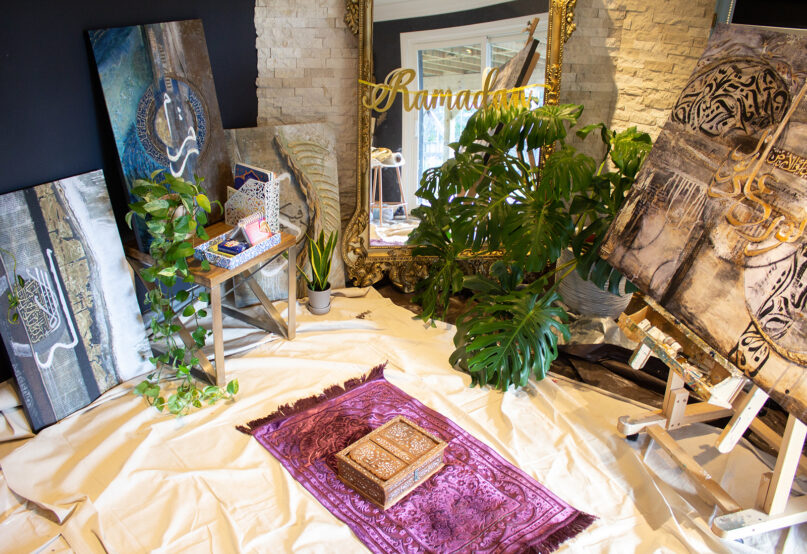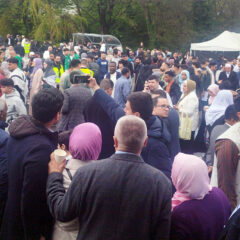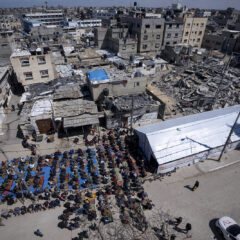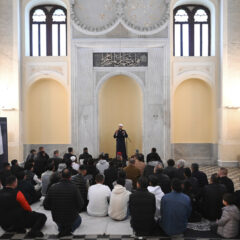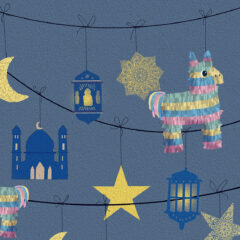(RNS) — This year, with pandemic infection rates down, many U.S. mosques have operated at full capacity during Ramadan, the Islamic holy month of fasting and prayer, and the chance to worship together, some Muslims say, has been more deeply appreciated.
“I find people to be more pleasant than usual this time around. Muslims are certainly giving more this year. The restrictions during the pandemic have reinvigorated worshippers,” said Shaykh Amin Kholwadia of Darul Qasim, an Islamic institute in Glendale Heights, Illinois.
But the adaptations Muslim families made over the two Ramadans observed during the pandemic have become permanent features of their prayer life, especially the modifications they’ve made to their homes while mosques were closed.
For Muslims, the whole Earth is a place of prostration, and any clean place they can lay a prayer mat will do. But to compensate for the meditative solace of the mosques they missed, some Muslim families set aside special areas in their houses for prayer and decorated them accordingly.
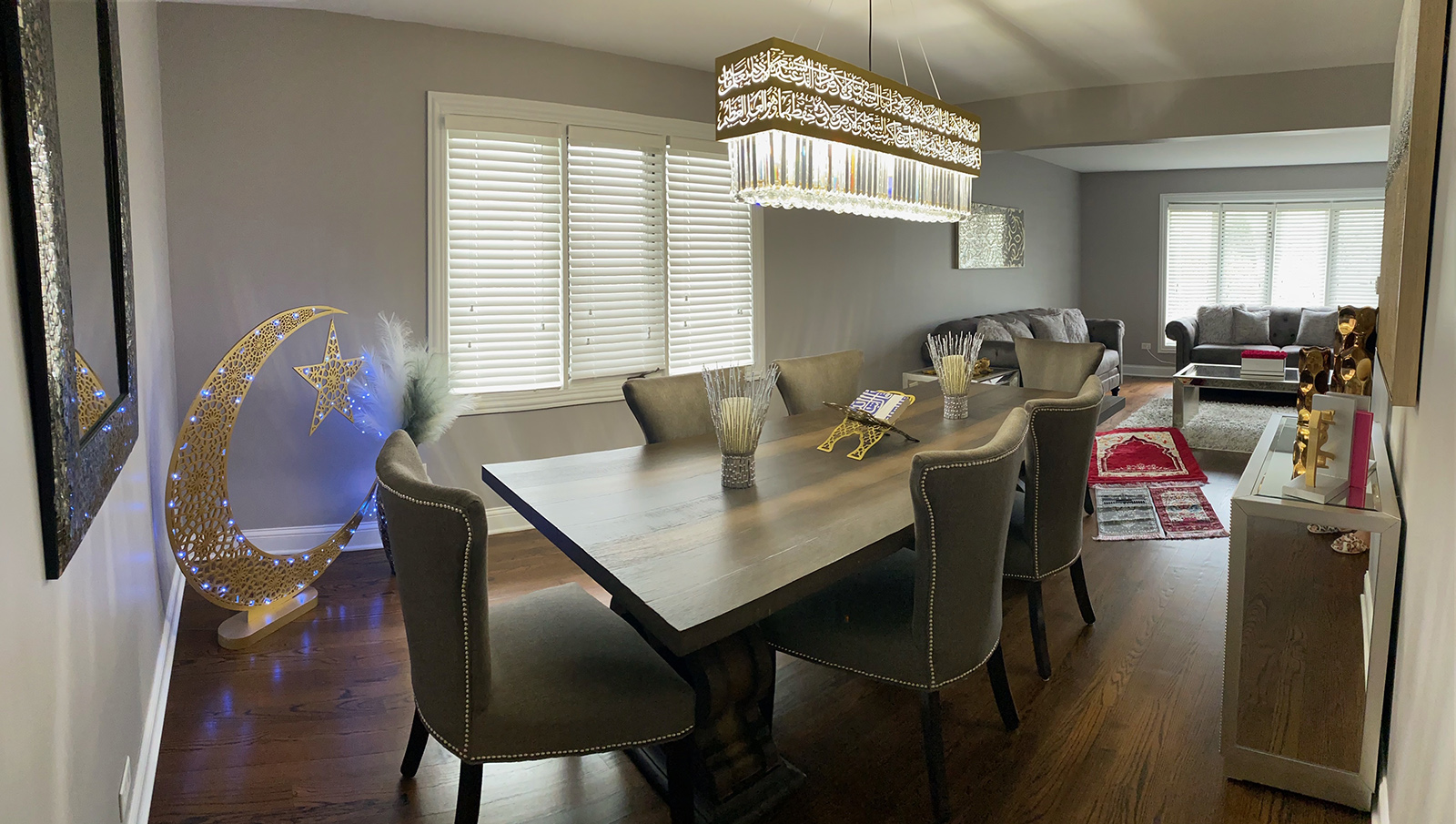
The living and dining rooms of Reem Judeh’s home in Bridgeview, Illinois. Photo courtesy Reem Judeh
In Bridgeview, a suburb of Chicago, Reem Judeh, manager of Modern Wall Art, transformed parts of their living and dining rooms at the onset of the pandemic to evoke the mosque a block from their house. It was no small challenge: They attend Mosque Foundation, which includes an expansive and elegantly appointed structure that serves more than 50,000 Muslims. “We redirected our strategies during the pandemic and applied them towards ideas we never thought of creating,” Judeh said.
A 5-foot-tall crescent moon and star outlined with lights and filled with an intricate geometric floral pattern represent the blessings of a new month and the sighting of the moon that traditionally begins Ramadan. Between silver and gold bookends spelling out the Arabic word for “read” — “iqra” — is a Quran with a bright-red cover that is the focus of the space and reminds Judeh of connectedness to God.
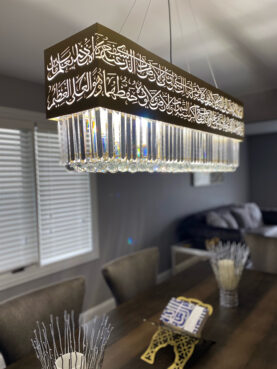
The dining room light fixture of Reem Judeh in Bridgeview, Illinois, is inscribed with the Ayat al Kursi — the Quranic verse proclaiming “there is no God but God.” Photo courtesy Reem Judeh
Over the dining room table is a light fixture that glows with the Ayat al Kursi — the Quranic verse proclaiming “there is no God but God,” the core tenet of Islam. With bevel-cut crystals hanging from a stainless-steel and gold bar and faceted crystal balls on the inside, the chandelier echoes the magnificent chandelier in the prayer hall at the Mosque Foundation.
Though it is a stunning design, Judeh made sure the calligraphed verse was legible. “Ayatul kursi is one of the most powerful verses from our holy Quran. It is often recited to protect us from evil. The meaning represents just how powerful Allah (The Exalted) is, and it is a timeless piece,” Judeh explained.
Saleha Contractor, an artist in Toronto, chose a more traditional aesthetic for the prayer space she created in a home studio in her home. The room is filled with her own calligraphy work, featuring verses from the Quran in Arabic that in translation read, “Allah is beautiful and He loves beauty,” and “Light upon Light.”
As Muslim teaching bars representations of the prophet or the divine, Arabic calligraphy is the faith’s primary art form, combining the prophet’s words with aesthetic beauty. Contractor uses her paintings to depict the Quran’s abstract imagery.
“I’ve taken my abstract painting and married it with calligraphy. I wanted to bring that traditional ethnic feel into my modern-rustic design,” she adds.
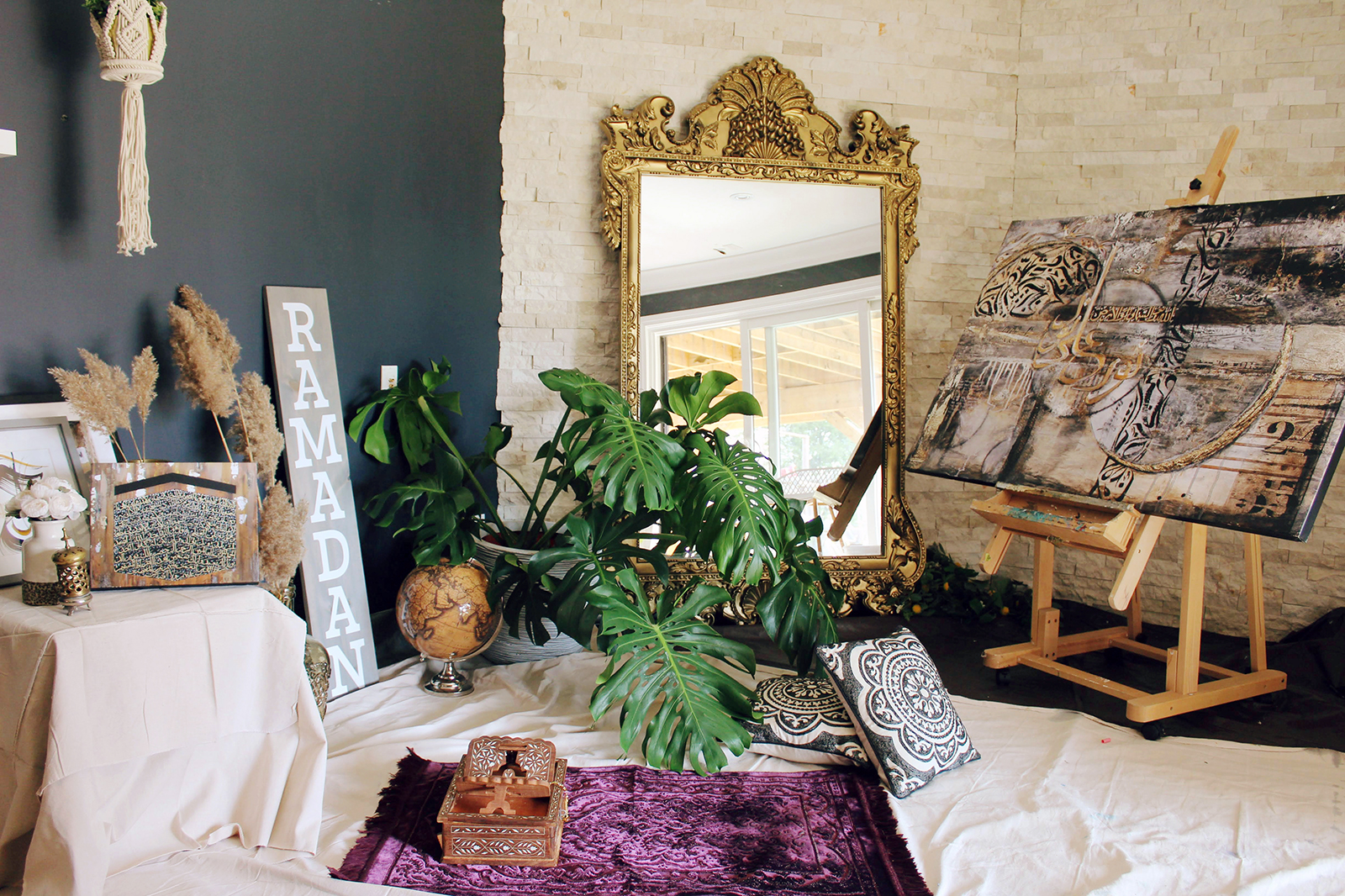
Artist Saleha Contractor’s prayer area in a studio space in her Toronto home. Photo courtesy Saleha Contractor
A piece titled “Raining Mercy” evokes the Kaaba in Mecca, the holiest site in Islam. In the painting, glistening gold arches enclose a niche that protects a lamp, symbolizing the Quran, which is connected in Islamic thought to light.
“When it reaches our hearts, it becomes Noor ala Noor, or “light upon light” — the light of the Quran and the purity of the believer,” Contractor explained. “We have a light within that needs to be lit.”
A small vintage chest inlaid with marble that Contractor’s parents brought from India is the centerpiece of the room. The chest is therapeutic, Contractor adds, as it brings up childhood memories, but the nature of the object itself turns the space into a sacred escape, she said.
“There’s something unique about opening a treasure chest. It invokes this feeling of a special moment, as though we’re uncovering ancient sacred text and connecting with the unseen,” she added.
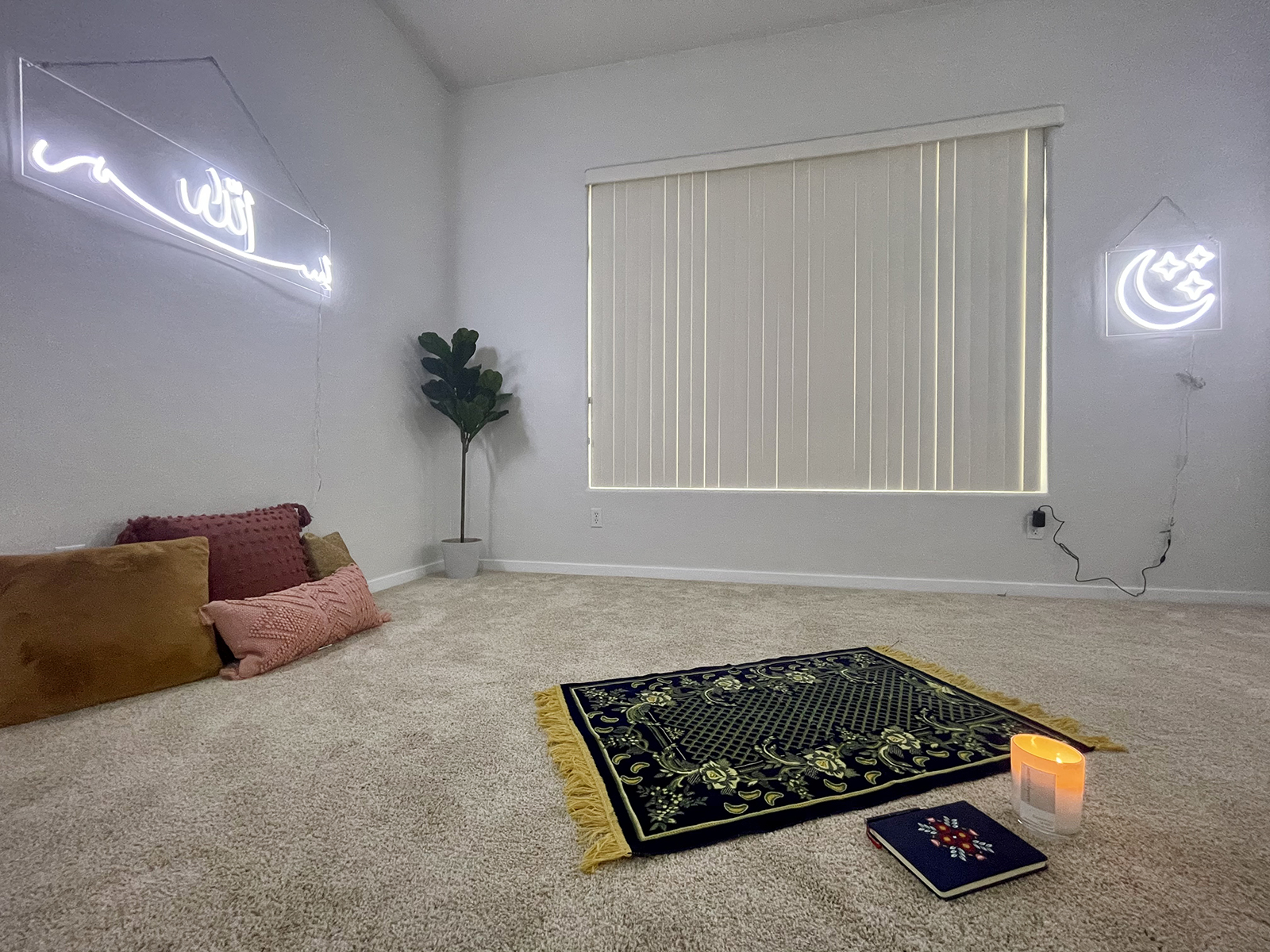
The Arizona home prayer room of Lena Sarsour includes a variety of neon lights. Photo courtesy Lena Sarsour
Lena Sarsour, a speech pathologist in Arizona, wanted to keep the prayer room simple and to the point. She developed a set of neon lights for Nominal, including a Ramadan crescent with stars, to create modern but meditative ambience. The white glow emanating from transparent glass, she said, gives the room an easy flow.
“Too much decor can be distracting and lead to a loss of focus within our prayers. We kept it minimal, we kept the walls peaceful, and there’s truly nothing more peaceful and symbolic than a moon and stars to help you focus and remember the larger world around you,” Sarsour said.
One sign is the Arabic phrase Bismillah, “In Allah’s name,” which is how each Muslim prayer begins (“and a reminder for every action outside of prayer,” Sarsour adds). The others are symbols of Syria and Palestine, the centers of much Islamic history. They “remind us of our roots and also serve as a reminder to pray for those that are facing difficulty in all countries,” Sarsour said.
“This feels different than other people who tend to rely on inspirational quotes to motivate them in a prayer space. I didn’t want there to be something to read, necessarily,” Sarsour said, explaining that her prayer is about more than just words, but also about symbols that evoke emotion.
“That emotion is exactly what we captured so well with our prayer space. We kept it minimal, we kept the walls peaceful, and there’s truly nothing more peaceful and symbolic than a moon and stars to help you focus and remember the larger world around you,” she adds.
This article was produced as part of the RNS/IFYC Religious Journalism Fellowship Program.
